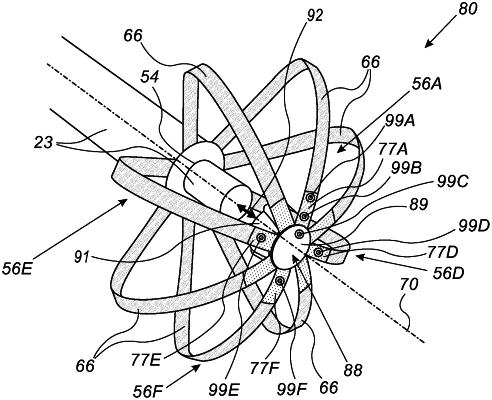| CPC A61B 18/1492 (2013.01) [A61B 34/20 (2016.02); A61B 2017/00526 (2013.01); A61B 2017/00867 (2013.01); A61B 2018/00077 (2013.01); A61B 2018/00083 (2013.01); A61B 2018/00267 (2013.01); A61B 2018/00351 (2013.01); A61B 2018/00577 (2013.01); A61B 2018/00613 (2013.01); A61B 2018/1467 (2013.01); A61B 2034/2051 (2016.02)] | 16 Claims |

|
1. A catheter, comprising:
a shaft for insertion into an organ of a patient;
an expandable distal-end assembly, which is coupled to the shaft and to an apex of the catheter, and comprises multiple splines, wherein, each spline of the multiple splines are formed from an electrically conductive material, at least 60 percent of a length of at least one spline and at least a portion of the apex is non-insulated and is configured to make contact with a tissue of the organ and to apply electrical pulses to the tissue;
one or more electrodes, which are coupled to at least one of (i) an insulated section of the at least one spline, and (ii) the apex, and, when placed in contact with the tissue, the one or more electrodes are configured to sense electrical signals in the tissue; and
a bump stop, which is coupled to the apex and is configured to contact a distal tip of the shaft to maintain a minimal distance along a longitudinal axis between the shaft and the apex, the bump stop being separated from the distal tip of the shaft with an axial gap between the distal tip of the shaft and the bump stop when a force is applied to the expandable distal-end assembly.
|